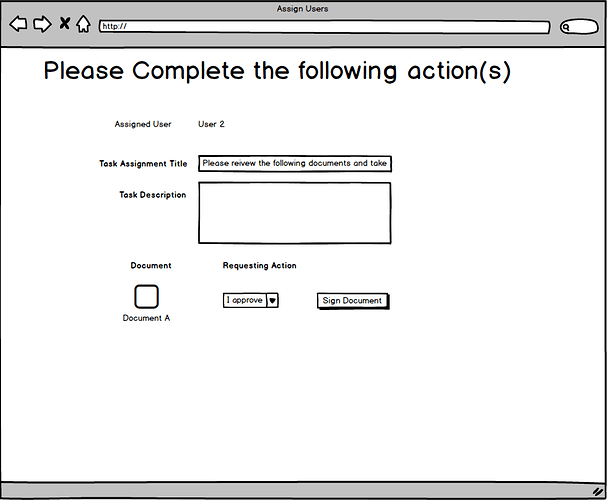Hi Thorben
Thanks for the reply and sorry for the confusion.
I thought maybe the best way to explain our use case to provide the mockups of our task forms. Please ignore my previous message as I think the following is probably the best way to explain our use case.
The following is the task assignment form. This form will be used to start a process in Camunda. The purpose of the form is to allow a coordinator the ability to select 1-n number of users to the document to request the selected users to sign the document. Additionally, the coordinator can select a different action per user per document.
Please notice in the mockup that User 1 has been assigned Document A and Document B but User 2 only has been assigned Document B.
Each assignment is independent of each other… meaning that the initial task form does not need to keep track of all assignments. It is basically used to start the process and pick the user assignment and their related documents.
Once the task assignment form is submitted, the requirement is for each user to only receive one assignment task form with the specific documents and the assigned action per document that was specified by the coordinator. The user will receive the form and sign off on each document listed on the form.
As an example, the following is the task form for User 1 that should be created based on the assignment data from the assignment form above. In this case, User 1 needs to sign off on 2 documents.
Please compare user the following is the task form for User 2 that should be created based on the assignment data from the assignment form above. In this case, User 2 needs to sign off on 1 document.
My assumption is that in either case, when user 1 goes to the tasklist, they should only see the the form for user 1. Conversely, when user 2 goes to the tasklist, they should only see the the form for user 2.
With these requirements in mind, how would I make the engine take the assignment form, break up the 1-n assignments into multiple forms… one for each user with their assignment data?
Thanks for the input and advice in advanced.
Greg



